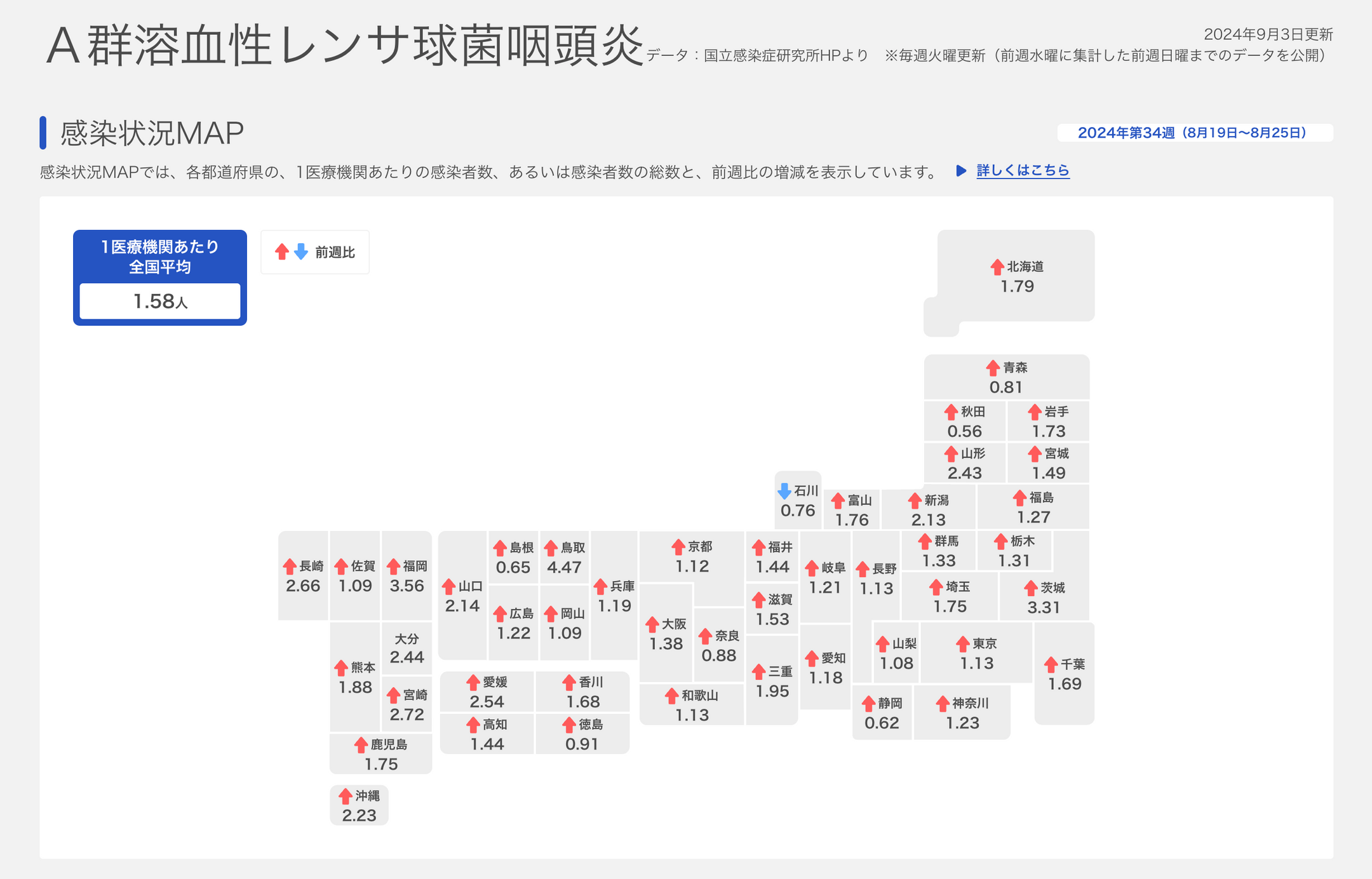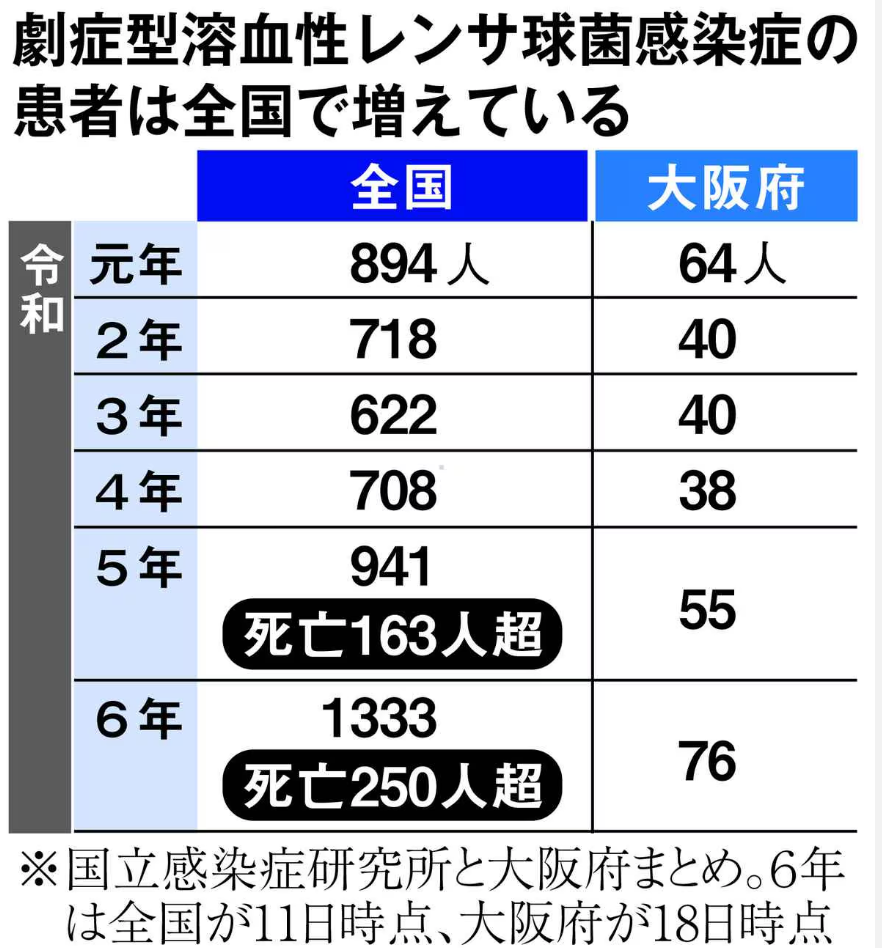https://www.sankei.com/article/20240826-Z2N65WRFUVO6HIJFIY2NQZVG7A/
According to a report by the Japanese media outlet Sankei Shimbun, cases of "invasive group A streptococcal (iGAS) disease," caused by a flesh-eating bacteria with a fatality rate of 30%, are on the rise, with at least 250 deaths, surpassing last year's total of 163. Data from the National Institute of Infectious Diseases indicates that this year, the proportion of cases involving the invasive group A streptococcus (iGAS) has exceeded 60%, compared to the usual range of 30% to 50%.

https://www3.nhk.or.jp/news/special/infection/dashboard/a-rensakyukin.html
As of June 16 this year, there have been 656 reported cases, with 288 infections occurring through wounds and 59 through respiratory droplets. The report highlights that most cases are concentrated in urban areas, with 184 cases in Tokyo, 91 in Kanagawa Prefecture, and 76 confirmed cases in Osaka Prefecture, surpassing last year’s 64 cases. An official from the Osaka Prefecture Infectious Disease Control Division noted that the exact reason for the increase in cases is unknown, but it may be related to fluctuations in the number of children affected by strep throat.
What is STSS
STSS, or Streptococcal Toxic Shock Syndrome, is a severe and life-threatening condition caused by certain strains of group A Streptococcus (GAS) bacteria. STSS occurs when these bacteria release toxins into the bloodstream, leading to a rapid drop in blood pressure, multi-organ failure, and in severe cases, death.
Symptoms of STSS can include sudden high fever, dizziness, confusion, rash, and severe pain, often in an arm or leg. If not treated quickly with antibiotics and supportive care, the condition can worsen rapidly. STSS is associated with a high mortality rate, particularly in older adults and those with underlying health conditions like diabetes.
Group A streptococcus typically causes acute pharyngitis and other illnesses, but when it leads to Streptococcal Toxic Shock Syndrome (STSS), it can result in necrosis of the limbs and multiple organ failure. Therefore, it is also known as "flesh-eating bacteria." The disease is characterized by rapid deterioration once symptoms appear, and it can be fatal, with most patients being over 30 years old. The Ministry of Health, Labor and Welfare has pointed out that there is currently no effective vaccine. Therefore, the public is urged to wash their hands frequently, properly clean wounds, and wear masks to protect themselves. Those experiencing similar symptoms should seek medical attention promptly. Japanese experts warn that symptoms of "flesh-eating bacteria" infection include sudden high fever, limb swelling, and pain, with multiple organ failure potentially occurring within hours, leading to shock. The elderly and diabetic patients are more susceptible to STSS, with a mortality rate of approximately 30% to 50%.



